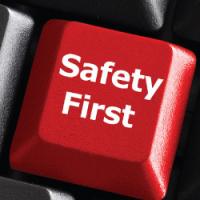- Posts: 350
- Thank you received: 11
Excavation Safety
- Safety Toolbox Talk Webmaster
-
 Topic Author
Topic Author - Offline
- Administrator
-

Almost every month somewhere in the news you can read about a working being injured or killed when a trench they were working in collapses. These injuries and fatalities are preventable with planning and proper execution of safety precautions.
Trench collapses can occur without warning, regardless of the depth. The vast majority of trenching fatalities occurs in trenches 5- to 15-feet deep. These depths invite taking chances, and often times it is the good, safe-looking material that turns out to be the unsuspecting killer. But trench cave-ins don't have to happen. The following information can help you avoid these potentially deadly accidents.
Make sure you know and follow the requirements:
General Requirements
- Before beginning excavation, establish the locations of underground and overhead utilities and services. Contact utility companies and advise them prior to the start of excavation.
- Remove or support all surface encumbrances, as necessary, to safeguard employees.
- Employees working in trenches 4 feet deep or more should have an adequate and safe means of exit, such as ladders, steps or ramps available at no more than 25 feet of lateral travel.
- Employees exposed to public vehicular traffic must wear suitable garments marked with or made of reflectorized or high-visibility material.
- Do not permit employees to go underneath the loads of lifting or digging equipment.
- When hazardous atmospheric conditions exist or you can reasonably expect them to exist, test and control the atmosphere to prevent exposure to harmful levels.
- Removable-type steel casings, and individually manned lifelines and harnesses are needed to protect employees in bell-bottom pier holes. Follow confined-space entry procedures.
- Employees must not work in excavations in which there is accumulated water unless they follow necessary safety precautions.
- Additional underpinning, shoring or bracing may be required when adjoining utility lines, foundations, walks and footings are endangered.
- Store spoils, equipment and other materials that can pose a hazard at least 2 feet away, or use effective retaining devices.
- Superimposed loads, such as mobile equipment working close to excavation edges, require extra sheet piling, shoring or bracing. The use of mobile equipment near excavations also requires substantial barricades or stop logs.
- Have a competent person on-site who is capable of identifying existing and predictable hazards and has the authority to take prompt corrective action.
- A competent person should be able to identify soil classifications and the protective systems to use in accordance with the OSHA Excavation standard, Subpart P.
- A competent person must make ongoing daily inspections of excavations, adjacent areas and protective systems, including after every rainfall or other hazard-producing occurrence.
- Walkways or bridges are needed for crossing over excavations. Walkways or bridges over excavations greater than 4 feet deep require standard guardrails.
- Erect standard guardrailing or solid sheeting no less than 42 inches above ground level around all tunnel shafts and bore pits.
- Barricade or cover all wells, pits or shafts.
- Back fill excavations upon completion.
Requirements For Protective Systems:
- When employees work in trenches more than 5 feet deep, the employer must protect them from cave-ins by using an adequate protective system. In hazardous soil, employers must provide an adequate protective system in trenches less than 5 feet deep.
- Determine maximum allowable slopes for soil or rock deposits in accordance from Table B-1, Appendix A, of the OSHA standard.
- Have a registered professional engineer design sloping or benching for excavations greater than 20 feet deep.
- Qualified personnel must design and install piling, sheeting, shoring, shields and support systems. The shoring system must be capable of withstanding all loads imposed upon it.
- Make sure material and equipment used for sheeting, sheet piling, bracing, shoring and underpinning is in good serviceable condition. Use timbers that are sound and free of defects.
- Place members of support systems in true horizontal position, spaced vertically and secured to prevent sliding, falling or kick outs.
- Progress from the bottom of the trench when removing support-system members. Slowly release jacks and supports.
- Remove support systems as you backfill the trench.
- Extend trench boxes and shields to the bottom of the trench and no less than 18 inches above the vertical part of the trench face, except in certain cases.
- Do not allow employees in shields during their installation, removal or relocation.
- When portable trench boxes are stacked,provide attaching means to prevent them from separating.
- Do not work outside of trench shields or shoring protection in unprotected trenches.
Please Log in or Create an account to join the conversation.
- Mike Spitzer
-

- Visitor
-

Please Log in or Create an account to join the conversation.
- Safety Toolbox Talk Webmaster
-
 Topic Author
Topic Author - Offline
- Administrator
-

- Posts: 350
- Thank you received: 11
Utilize the search feature, if nothing comes up then that is all we currently have on the site. Would highly appreciate it if you would share your own with our community.
Thanks
Please Log in or Create an account to join the conversation.
